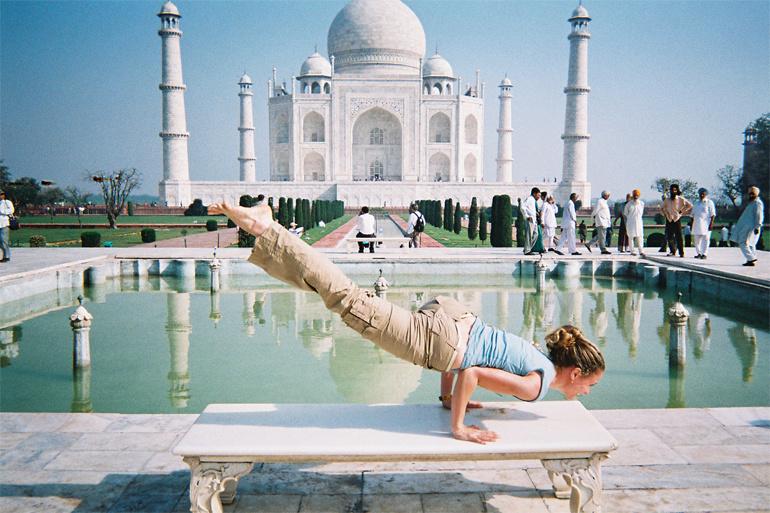What is triple arthrodesis?
Triple arthodesis is used to address many types of foot deformity and pain. This procedure fuses three joints in the back of
the foot. These joints, shown in the image to the right, are the talonavicular (blue arrow), subtalar (red arrow) and calcaneocuboid (green arrow).
What are the goals of triple arthrodesis?
Surgeons try to avoid fusions, but sometimes pain and deformity are so severe that this procedure offers the best chance of producing a less painful foot with better alignment. Fusions often improve stability and allow for easier standing and walking. The triple arthrodesis is a time-tested, durable procedure.
What signs indicate surgery may be needed?
Triple arthrodesis is indicated for severe arthritis, instability or deformity that cannot be controlled with nonsurgical approaches. Other conditions, such as severe flatfoot, abnormal connections between bones, excessively high arches and joint instability due to neuromuscular disease, can also warrant treatment with fusion.
When should I avoid surgery?
Patients who are still growing are not ideal candidates as they may develop additional deformity as they grow. Patients who use tobacco, have an active infection or have poor healing potential are at higher risk for complications. Nonsurgical measures such as bracing and anti-inflammatories should be attempted first. If another surgical procedure that leaves the joint intact can achieve the same goal, this is preferred over a fusion.
General Details of Procedure
Two incisions are generally required for this procedure. The traditional method involves one incision on each side of the foot.
Within each joint cartilage is removed, bony surfaces roughened, and defects filled. Once all three joints have been prepared, they are put into place and hardware is placed to stabilize the reconstruction and promote healthy fusion.
Specific Technique
The surgeon confirms proper position of the bones with an X-ray while in the operating room. Then all incisions are closed and covered with bulky dry sterile dressings. To lessen post-operative pain, the nerves around the knee or ankle may be numbed with medication.
What happens after surgery?
The rate of healing is variable and is influenced by many factors. In general, the foot is kept elevated with no weight on it for the first two weeks to minimize swelling and allow healing of the skin. Stitches may be removed two to three weeks after surgery.
Different weight bearing protocols may be used. After signs of healing are noted, progressive weight bearing is allowed until full weight bearing is reached. This typically takes three months. A removable boot may be used rather than a cast.
Potential Complications
Successful triple arthrodesis is appreciated by patients. Most feel that the loss of motion is a very acceptable trade-off for pain reduction. In the first two to three weeks, the most likely complication is wound breakdown and/or infection. These are best avoided by not smoking, elevating the foot, avoiding any weight on the foot, and keeping the surgical dressing clean and dry.
There are complications that relate to surgery in general. These include the risks associated with anesthesia, infection, damage to nerves and blood vessels, and bleeding or blood clots.
The most common long-term consequence of triple arthrodesis is gradual development of arthritis in other joints of the foot and ankle. These changes can take years or even decades to develop and many never become noticeable to the patient.
Frequently Asked Questions
Will I have stiffness after surgery?
Yes, you can expect some degree of stiffness in your foot as a result of the surgery. You will maintain up-and-down motion, but side-to-side motion will become limited. This will be most noticeable on uneven surfaces but is usually a good trade-off for reasonable pain relief, improved stability and/or deformity correction.
Will I be able to return to my usual activities?
You can generally expect to return to most activities in life, but the stiffness in side-to-side motion will limit sports participation.
When can I expect to have recovered from a triple arthrodesis?
A significant amount of healing will occur in the first three months. However, it takes about one year for maximum improvement.
Are there side effects to triple arthrodesis?
As one part of the foot is made stiffer, other structures are forced to accept more stress, which increases the chances that they may wear out. This often takes many years or decades to become noticeable.
When will I be able to take a shower?
Generally, showering is allowed once all wounds have healed. This usually takes place within the first two to four weeks depending on swelling and soft-tissue health.
Will I be able to fit into regular shoes?
Typically patients fit into a shoe after surgery better than before surgery.
When will I be able to bear weight on my foot?
Partial weight bearing typically is allowed once incisions have healed. Full weight bearing generally takes between two and four months.
The American Orthopaedic Foot & Ankle Society (AOFAS) offers information on this site as an educational service. The content of FootCareMD, including text, images and graphics, is for informational purposes only. The content is not intended to substitute for professional medical advice, diagnoses or treatments. If you need medical advice, use the "Find an Orthopaedic Foot & Ankle Surgeon" tool at the top of this page or contact your primary doctor.
Source: http://www.aofas.org/footcaremd/treatments/Pages/Triple-Arthrodesis.aspx


